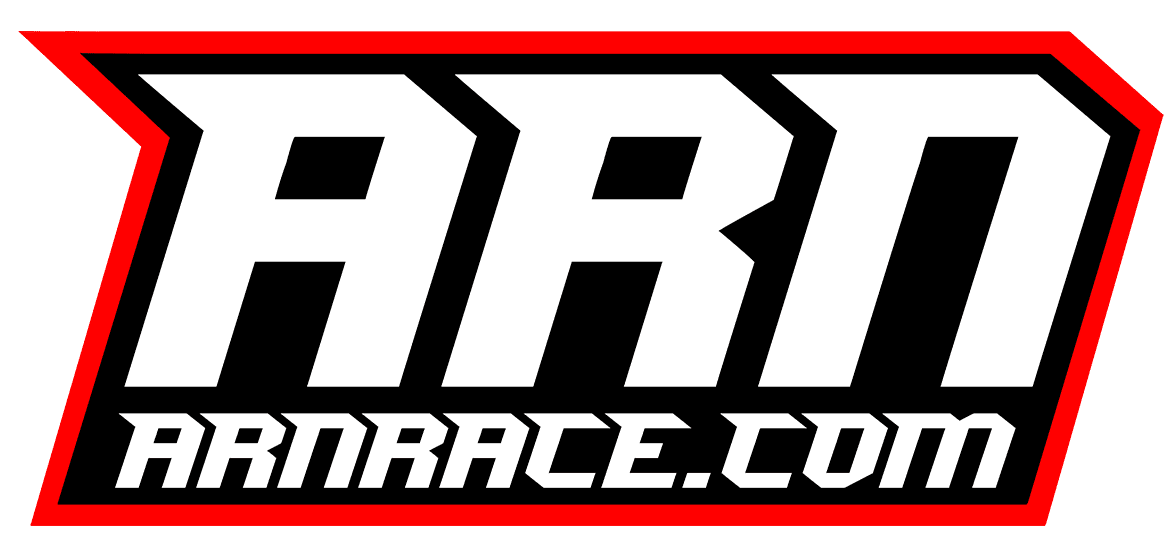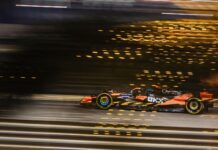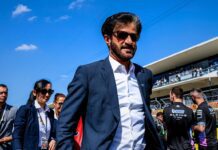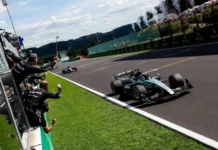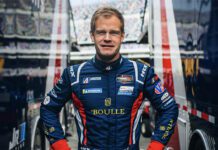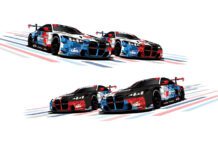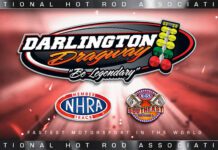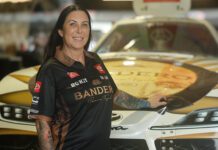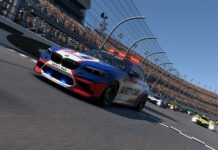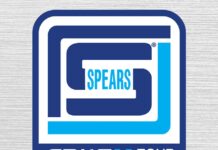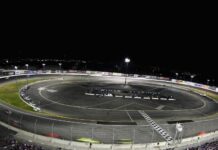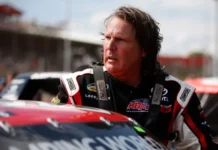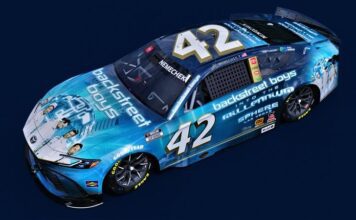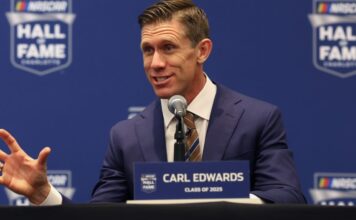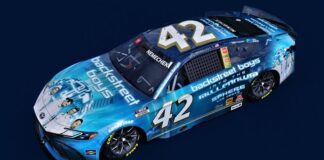Jusan Hamilton will be making NASCAR history in Sunday’s Daytona 500 – and hopefully in the most inconspicuous way possible.
“On a really good day in race control, no one even notices that we were there, which I’m completely fine with,” Hamilton told NBC Sports. “That everything being focused on – the winner, the competition, the way it played out – happened on the racetrack, and we aren’t the story. That’s my preference for calling a NASCAR race.”
But as the first Black race director of the Cup Series season opener, Hamilton, 31, inherently will be an important part of the backstory in the 64th running of The Great American Race.
Believed to be also the youngest race director to call the Daytona 500, he will be only the third person in 30 years to oversee the application and flow of caution flags, race procedures and potentially controversial penalties during the biggest event of the season.
Hamilton will occupy perhaps the most important seat Sunday at Daytona International Speedway, perched 170 feet above the front-stretch with binoculars at the ready and a cacophony of voices ranging from spotters positioned around the track to high-ranking officials shouting information in the suite commonly referred to as the NASCAR scoring tower.
For more than three pressure-packed hours, the Ithaca, New York, native will try to instill order among inherent chaos – 21 years and two days after the momentous 2001 Daytona 500, which also was the first NASCAR Cup race that Hamilton watched from flag to flag.
It’s been a journey that Hamilton said was accompanied by “a good amount of doubt” as he transitioned from race car driver to executive, and he’s encouraged by signs of future NASCAR diversification through its inroads into minority communities (such as The Clash at the Coliseum, which brought NASCAR to inner-city Los Angeles).

“It’s a huge accomplishment for me, and I hope the biggest thing that comes from that is when there are young African-American kids from upstate New York or in an area where NASCAR isn’t necessarily the popular thing or on everyone’s radar, I hope that I am setting the example,” he said. “Instead of getting the questions I’d typically get of, ‘Why are you interested in this? Is this really for you?’, I hope the next generation of those kids see motorsports and racing as something they have a passion for and a desire to be a part of and that is an easier thing for them to achieve.
“I was always amazed when we’d go to Watkins Glen, and I’d see new fans at the track, and there are five dirt tracks within about 20 miles that they’d never heard of, and I’d say we’ve got to get people out to these racetracks at the local level. Seeing that as an area where they’re going to be accepted, I think that’s going to be a big part of the future of the sport.”
Ahead of calling his first Daytona 500, Hamilton sat down for a wide-ranging interview with NBC Sports about his philosophy for calling races, his background and upbringing in racing and the success of The Clash:
THE JOB
Though it’s his first Daytona 500, Hamilton has called previous races at the 2.5-mile superspeedway. He initially joined NASCAR as an intern in 2012, worked in Integrated Marketing Communications for a year and then before moving into race operations in 2016. He made his debut as NASCAR’s first African-American race director in March 2017 with an Xfinity race at Auto Club Speedway and his first Cup race at Pocono the next year.
Hamilton shares the race director role with Tim Bermann (who called the last two Daytona 500s after a 31-year run by David Hoots) and will call 46 races (23 in Cup) across NASCAR national series this season.
A graduate of Ithaca College with degrees in integrated marketing communications and sociology, Hamilton is process-driven by nature. He cites preparation as the most important part of his job, which also includes managing NASCAR’s Drive for Diversity program and building the race weekend schedules with tracks and broadcast networks.

“The best way to go about overachieving and exceeding expectations was to be prepared and put the work and time in,” he said. “It just comes natural to me. I enjoy being that way and take pride in the result.”
While raising two young daughters, he also helped his wife, Charis, open a maternal pelvic physical therapy practice in Port Orange last month (Jusan designed the business’ website and logos).
“My wife is a very hard worker, working at her physical therapy clinic as she starts her new business,” he said. “We’re very motivated people. I’m not sure how many hours I work, but my biggest hope is it sets positive examples for our daughters, and they can achieve their goals as well.”
THE APPROACH
Race director might be analogous to the head referee in an NFL game, but the NASCAR job entails more than just competition. The safety of drivers, pit crews and track workers also are a primary responsibility for race directors, who dispatch cleanup crews after accidents (and must be familiar with the track-specific wall cutouts that lead onto the track).
Hamilton said he studies race procedure rulebooks, watches old races and has copious notes from every race he’s called (he’s observed the past six Daytona 500s from the scoring tower).
“Knowing racing is a big part of it,” he said. “Being around it my whole life, racing makes sense to me. Knowing the facility that’s a big part, whether understanding how the garage flows for practice and qualifying or what you’re capable of around the facility when it comes to moving our safety equipment.”
One of the job’s most critical elements is determining yellow flags, which Hamilton said can depend on interpreting how information is being relayed.
“You have folks around the racetrack, whether our turn spotters or officials on the ground, and you learn their voices,” he said. “If rain is moving in, and you hear an elevated tone in a turn spotter’s voice, you know this isn’t just a sprinkle that’s picking up, you need to put out the caution. You learn different tendencies like that, and all that goes into calling yellows.”
Aside from being Hamilton’s first Daytona 500 as race director, Sunday also will be the points race debut for the Next Gen, which likely will race similarly to its predecessor despite having vastly new features.
As with any superspeedway race, there’s an expectation that “more than likely, you’re going to have a fairly large incident,” Hamilton said. “You might have multiple big wrecks. And getting the track restored, making sure everyone’s safe, reacting to those appropriately, that’s normally the biggest challenge with Daytona. And then of course enforcing all the other rules around a restart, pit road, the yellow line rule. You’re just as focused like a competitor would be through those three and a half to four hours.
“None of that stuff is something you can really predict. You get a sense of when business is picking up, but outside of that, it’s being prepared.”
MEMORABLE RACES …
The 2020 Xfinty race at the Charlotte Roval, which was run with rain tires in borderline monsoon conditions, was the most challenging so far for Hamilton.
“But what I also love about that race is we kept adapting,” he said. “Racing in that type of conditions for the first time, trying to keep the track in raceable condition by using equipment in ways we typically don’t to remove the water, the red flags. There was so much thrown at us in that race that we had to adapt to, and I was very proud of being able to do that because of our preparation.”
Hamilton said The Clash at the Coliseum ranks among his best races but also was special for the amount of time he invested in its logistics. He made six cross-country flights from Florida to L.A. after the 2021 season to troubleshoot an event that featured many wrinkles, such as cars traveling surface streets into the arena and heat races that were familiar to Hamilton (whose start in racing was on dirt tracks).
“I thought we made it look smooth and easy, which is always the goal coming from race control,” he said. “The Clash was such a proud moment for the sport to be able to give that race the identity that we had. I really took a lot of pride in calling that race because of the format.
“I’ll be very proud of doing the 500 as well. Every race takes the same amount of importance where we want to have a fair competition with integrity and want the competition to play out on the racetrack while we enforce our rules.”
… AND CONTROVERSY
But like most Cup races, the Clash also had at least one minor controversy (in this case, the timing of the halfway yellow flag that left race winner Joey Logano’s team confused about whether he’d taken the lead before the field was frozen). Hamilton concedes that criticism and upset race fans come with the territory of being a race director.
“I’ve been a fan on that side and might have a different opinion of how something should have been handled,” he said. “That’s part of fandom, so I accept that. But what I also know is we’re making a decision in real time and don’t have the luxury of replaying something because people’s safety is on the line.
“Whether it’s a spin that may not result in wall contact, but the field is bearing down on that car, or if it’s a reaction to a potential piece of debris that looks like it could be metal and cause harm. Those types of decisions are things that people don’t necessarily see, but we have to react to in real time. As long as we can feel like we were prepared and made the right decision in that moment, the race goes on from there.”
Hamilton was a curious observer in the disputed finish of the 2021 Formula One finale, both as a race director and a longtime fan of seven-time champion Lewis Hamilton (who lost the title).
“I can’t pass any judgment on what they do in F1 race control,” Jusan Hamilton said. “I’m watching as a fan. The rules and procedures are very different from ours. I was disappointed as a fan that my driver didn’t win in that instance. But it certainly crossed my mind, if this was a NASCAR event, how would I have handled this type of incident differently. Our rules are very different, but you can certainly take learnings, and I’m always thinking about ‘How would this apply to us?’ if I’m watching any other motorsport.”
HIS START
A self-described “car guy,” Hamilton’s mechanical aptitude was cultivated in the garage of a grandfather who had him behind the wheel of go-karts and tractors as a toddler and also introduced him to the upstate New York dirt track scene.
“I always had a strong interest in anything that had four wheels, even some with two,” he said. “I’d always watch Supercross, Monster Trucks, open wheel racing. NASCAR stuck with me the most.”
It particularly resonated with the 2001 Daytona 500, which marked the start of NASCAR’s first full-season network TV deal and ended with the death of Dale Earnhardt.
“Obviously the ending was a very traumatic and pivotal moment because the sport lost a hero,” Hamilton said. “But before that, I remembered most how the race played out and the stories of how the drivers had gotten to that point. From that point forward, not only was I racing every weekend, but I’d follow every NASCAR race. As a 10-year-old, what I imagined myself doing was to compete at that level. I never felt that wasn’t achievable.”
It ultimately turned out to be unaffordable. After a career in go-karts, modifieds and mini-sprints, Hamilton’s application to NASCAR’s Drive for Diversity was denied in 2005 because he lacked experience in full-body cars. Instead of making a switch that would plunge his family into debt, Hamilton went to college for communications and marketing in hopes of landing a job with a corporate sponsor in racing.
“I use those skills today working with broadcast partners and racetracks on the event schedules,” he said. “And the sociology degree comes into managing the Drive for Diversity competition programs. I didn’t know that’s where those avenues would lead, but I’m very thankful that I found that pathway to what I’m doing now.”
